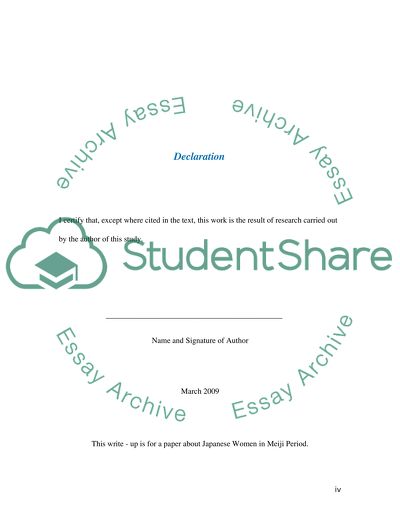Cite this document
(“Japanese Women in Meiji Period Essay Example | Topics and Well Written Essays - 3000 words”, n.d.)
Retrieved from https://studentshare.org/gender-sexual-studies/1552642-japanese-women-in-meiji-period
Retrieved from https://studentshare.org/gender-sexual-studies/1552642-japanese-women-in-meiji-period
(Japanese Women in Meiji Period Essay Example | Topics and Well Written Essays - 3000 Words)
https://studentshare.org/gender-sexual-studies/1552642-japanese-women-in-meiji-period.
https://studentshare.org/gender-sexual-studies/1552642-japanese-women-in-meiji-period.
“Japanese Women in Meiji Period Essay Example | Topics and Well Written Essays - 3000 Words”, n.d. https://studentshare.org/gender-sexual-studies/1552642-japanese-women-in-meiji-period.


